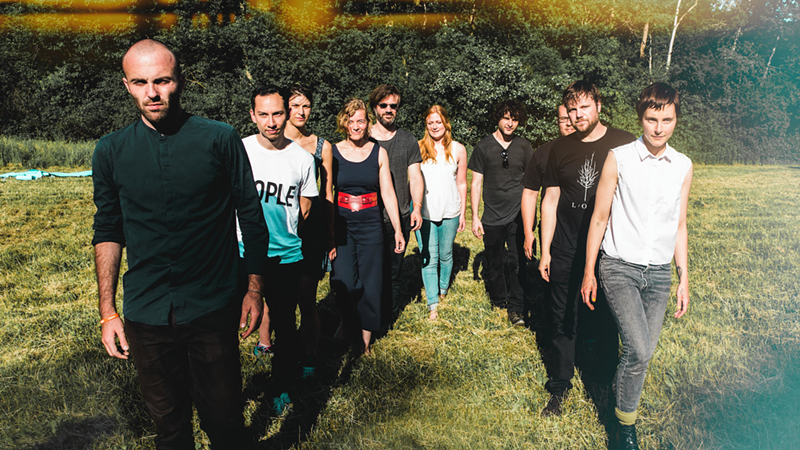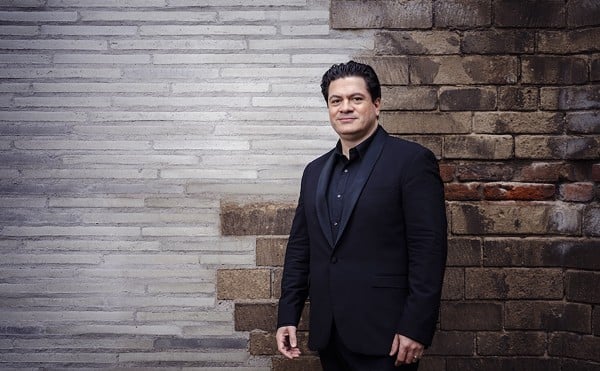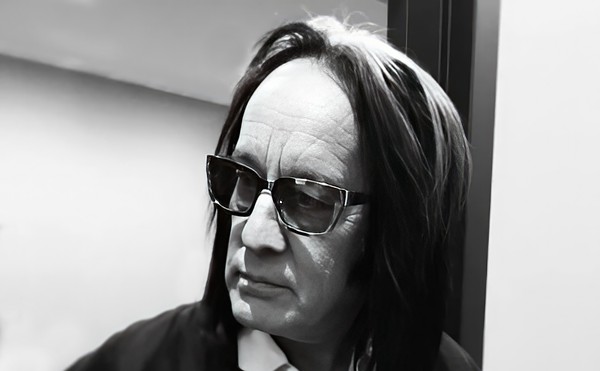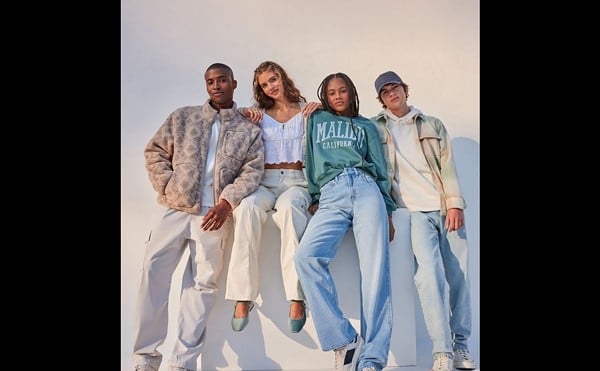Adventurous collaborations between Indie/Art Rock outfits and forward-thinking orchestral troupes have dotted the musical landscape in recent years. For proof, see none other than Bryce Dessner’s Cincinnati-set MusicNOW festival, which mixes more conventional bands like his own group, The National, with composers like Nico Muhly and Chamber music masters like Eighth Blackbird.
The latest such fruitful collaboration pairs Minneapolis ElectroPop outfit Poliça with s t a r g a z e, a German-based orchestral collective founded by composer André de Ridder. Poliça’s beat-driven, electronically enhanced approach mixes the shimmering, high-lonesome vocals of Channy Leaneagh with the sleek production work of Ryan Olson. But they’re no ordinary electro-synth outfit — a pair of drummers and an expressive bassist anchor the band’s atmospheric songs, which nonetheless leave plenty of space for the rich orchestral sounds of s t a r g a z e to enter into and enhance the picture.
The two outfits initially collaborated for a one-time live event put together by Liquid Music, a project run by the Saint Paul Chamber Orchestra in Minnesota. Enthralled by the results, the relationship continued, yielding the recently dropped album, Music for the Long Emergency. The live event inspired six of the record’s seven songs. The seventh, “How Is This Happening,” leapt from Leaneagh’s dazed mind the day after the 2016 U.S. presidential election. The resulting 10-minute epic fuses the singer’s haunting vocals with s t a r g a z e’s rich, tension-laced backdrop, which is punctuated by a lonely, melancholic horn and throbbing atmospherics. It’s an unpredictable musical odyssey that could only have sprung from this particular collaboration.
CityBeat recently connected with Maaike van der Linde, a Dutch-born flutist in the s t a r g a z e collective, to investigate everything from Leaneagh’s unique presence to how the current political climate impacted what would become Music for the Long Emergency. The collective’s Cincinnati appearance Friday is presented by the Contemporary Arts Center and MusicNOW.
CityBeat: Why were you interested in collaborating with Poliça? What, from your perspective, makes them unique or different from the other Pop/Rock/Indie musicians s t a r g a z e has worked with previously?
Maaike van der Linde: What struck me was Channy’s enchanting stage presence, which was both warm and ethereal and distant at the same time. That, in combination with the two super-tight grooving drummers and a bass player who also has the voice of an angel, created a really special sound. I could hear that there was a lot of space for us in the music because of this instrumentation. We basically complement each other. Poliça takes care of the rhythmic flow, the deeper bass sounds and the vocals and words. The harmonic side is left quite open and sparse on Poliça’s side — there is no guitar or keys filling up that space and that is why there is a lot of space for what we bring with s t a r g a z e. After hearing that during their concert in Berlin, and after meeting them for the first time and really getting along, I could feel that this was going to be a very interesting and fruitful collaboration.
CB: What was it like for you, as an orchestral group, to have to incorporate lyrics and vocals? How did that alter or inform the way you wrote and performed your contributions?
MV: The lyrics are very important in this project. As a European/American group, we want to react to what is happening around us, and with globalization we are aware of what is happening on the other continent — or at least we think we are. Political decisions influence us all, and as musicians we want to make our voice heard and spread a movement that creates awareness. Language is of course an extremely powerful and direct way of communicating, and we want to support those words and communicate our message with our music and our instruments. There are many moments in the music that might give you a sense of impending doom, because we are playing our instruments in a painful-sounding way. This is how we feel about certain things that are happening around us, so for us it only makes sense to translate that into sound and word.
CB: I read somewhere that the only song that started with lyrics was “How Is This Happening,” which Channy apparently wrote as a reaction to Donald Trump becoming President. How did starting with Channy’s words and voice impact the writing of the song?
MV: Channy sung her melody and words to us as an a capella song. She was singing it freely, sort of unsure and searching for direction. I started following Channy’s melody on my flute, and because there is no set meter, it was as if we were both searching for each other to connect because we both know we have to do something, go somewhere but we’re not entirely sure how — like walking together through the darkness and trying to stay close to each other. This way of playing resonates so strongly with what Channy is singing, that the whole song is based upon the meaning of the words and the way Channy was timing them.
CB: Speaking of “How Is This Happening,” Channy drops out during the second half of its 10 minutes, culminating with this quite ominous instrumental outro. When writing a song that can seemingly go anywhere and stretches out that long, how do you know when it’s finished?
MV: Some of our songs are shorter and have a traditional song structure, and even they are filled with unusual sounds and effects. It was never our aim to write an easy-listening fast-food album. We wanted to challenge each other and our audience. We wanted to make something different and good, so when we have 10 ideas for a song and they’re all too good, we just find a way to make it work. It becomes a longer journey or a musical collage. We experimented a lot with the structure of songs. Sometimes two compositions became one track. In the end, Ryan (Olson) is the producer, and he helped by making a few final decisions on structure.
CB: You guys have talked about this album being a result of and a reaction to the political climate of the last two years. Yet there are no overt references to particular issues or political figures. Was that intentional? Were you wary of being too literal in that sense?
MV: You can see this album as a time document, but one that could also have been written a long time ago in a different place. Or it might be a piece of music that people relate to in 100 years — let’s hope not. But, as Channy sings, “We’ve got a lot of work to do.”
The show Poliça & s t a r g a z e: Music For The Long Emergency takes place Friday at Memorial Hall. Tickets/more show info: here and memorialhallotr.com.






